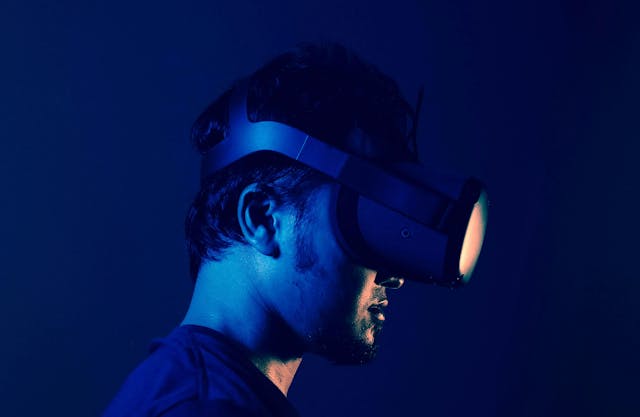"The Wild Robot": Artificial Mother with a Beating Heart

Better things for better living through robotics: Rozz (Lupita Nyong'o) is "The Wild Robot" / Photo courtesy of Universal Pictures and Dreamworks Animation.
Do you miss the good old days before "Shrek" set the blueprint of animated movies as ribald entertainment for all ages? Or the golden age of Pixar, before too many sequels curdled the studios' creativity? Well, it was that and a Disney takeover. But I digress. Dreamworks atone for letting the green ogre have his way with pop culture with "The Wild Robot." Based on Peter Brown's children's novel, the movie, adapted and directed by Chris Sanders, feels like a throwback. It does have recognizable elements - cute animals! - but it decidedly resists following the expectations of a formula-fed public. Its triumphs are subdued and moving instead of frantic and grandiose.
"The Wild Robot" of the title does not begin as such. It's a Rozzum Unit 7134, manufactured to serve a family looking for a high-tech solution to the problem of domestic work. A meteorological event throws several boxes off the container ship, transporting the cutting-edge cargo to its market. They wash on the coast of a remote island, unblemished by human beings. That's where one of the robots turns herself on. I use the feminine pronoun because Lupita Nyong'o lends her warm and comforting voice to the machine. Also, society's cruelty towards hard-working women - and mothers - becomes the undertow of the plot. Traditional gender roles are pretty much in the minds of filmmakers. Roz, as the movie ends up calling her, responds to a program that ordains her to help whoever is around. In this case, that would be a veritable menagerie of forest beasts.
They don't take kindly to the strange metal-clad creature. They push, attack, and pillage Rozz's body for shiny parts. Understanding that she must find a way to communicate with the prospective "clients," Roz lets her artificial intelligence run wild and, over time, learns how to speak their language. That is the language of every species around her. From then on, the audience can listen to the critters speaking the Queen's English. It's a nifty trick, on par with sly maneuvers like the one conjured by director John McTiernan in "The Hunt for Red October" (1990), when he zoomed in on the lips of a soviet crew member and had him start speaking Uncle Sam's language without breaking the camera take. The attacks continue, and a particularly violent - and scary - encounter with a bear sends Roz flying straight into a geese's nest. The sole survivor is the weakest egg.

Tech is mothering: Rozz (Nyong'o) contemplates the newly hatched gosling Brightbill in "The Wild Robot" / Photo courtesy of Universal Pictures and Dreamworks Animation.
Once Roz can communicate with her new neighbors, the cute animals unleash their selfish side - or is it the survival instinct running full-fledged? - and begin to take advantage of the concerned machine. For a while, I thought the movie was becoming a kiddie version of "Dogville" (Lars von Trier, 2003). Wouldn't that be something? Don't get your hopes up. This movie has to work for the conservative family market. The worst animal of them all is Fink (Pedro Pascal), a duplicitous fox that, despite his wild self, takes a shine to the machine. He is, after all, another pariah in the forest. The egg hatches eventually. The robot, the fox, and the newly arrived gosling (Kit Connor, the teen queer heartthrob from Netflix's series "Heartstopper"), named Brightbill by the unlikely maternal figure, form a strange but functional family, challenging the course of mother nature and technology.
The accident that renders Brightbill an orphan brings death to the enchantment of "The Wild Robot." The mortal end is not foreign to kiddie entertainment. Just a few days ago, we contemplated how the marvelous French movie "Chicken for Linda!" (Laudenbach & Malta, 2023) served the death of a father in the first scene and invoked his ghost for empathetic contemplation. Mortality and the mercilessness of the food chain bring an interesting pall over the proceedings, at least for a while. As Brightbill grows, his "Ugly Duckling" narrative takes over the movie, adding a dash of "Stella Dallas" (King Vidor, 1937) for pathos. To belong to his kind, the goose must leave Mother Rozz behind. And the animals must learn to abandon their carnivorous, wild ways to survive. Can't we all get along? Yes, we can. It's not that "The Wild Robot" loses its nerve. It's just that, unlike its characters, it can't go against its nature.

All in the family: Rozz (Nyong'o), young Brightbill (Boone Storm), and Fink the fox (Pedro Pascal) stick together in "The Wild Robot" / Photo courtesy of Universal Pictures and Dreamworks Animation.
The animation is appropriately beautiful, and the filmmakers find clever ways to highlight Rozz's foreignness with purely aesthetic resources. Once she turns herself on, we see the environment from her point of view. The colors adopt an overly bright shade and a discretely simplified spectrum of color. Diminutive pixels become evident. As the robot begins to vibe with the ecosystem, the animation returns to its bucolic vision of nature. It's hard to tell you when the change happens. Maybe the effect only lasted a scene. Even so, this is an intelligent way to show how she gradually transforms from an invasive object into an undeniable community member. As further plot developments prove, this is where she belongs.
And can you blame her? It's not just the emotions that matter. Nature is healing. The influence of master animator Hayao Miyazaki is evident, particularly from his spectacular US breakthrough "Princess Mononoke" (1997). It is stranger than fiction that the classic movie recently fell prey to the Artificial Intelligence Brigade. A man with too much time on his hands "created" an AI-fueled version of the "Princess Mononoke" trailer as a misguided "homage" to Miyazaki.
You could say that "The Wild Robot" is a subtle appeal to embrace technology, even if it seems to refute nature. And yes, the beauty of the movie comes from digital animation, not by the hands of animators of yore, like the Disney artisans who made "Sleeping Beauty" and "Bambi" (Algar et al., 1942) and "Sleeping Beauty" (Clark et al., 1959). However, pre-AI animation demands human creativity and choices made by individuals. It would rain these movies of a pulse to take men and women out of the equation. Let's hope AI fans take a note from Rozz. The challenge is to humanize technology, not to displace it. The machine becomes a mother and not the other way around.
Watch “Lonely”
“Lonely” is a powerful reminder that no one is ever truly alone, and there is always someone out there who cares and wants to help.
Stream NowWant to get an email when we publish new content?
Subscribe today



























